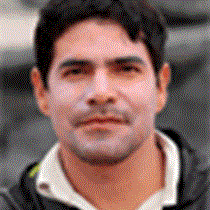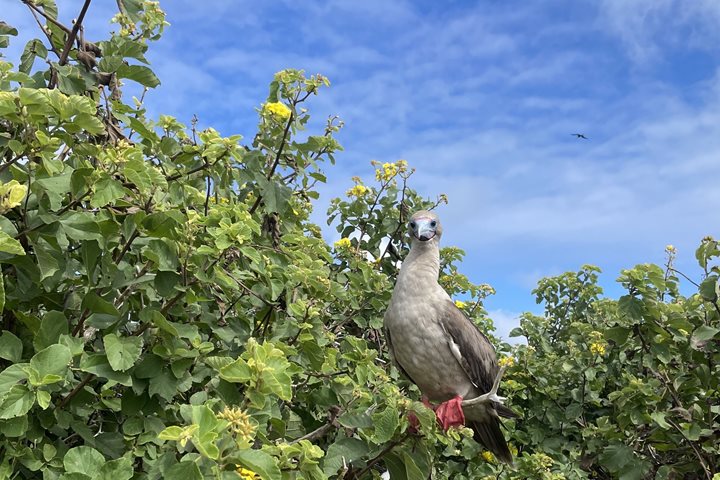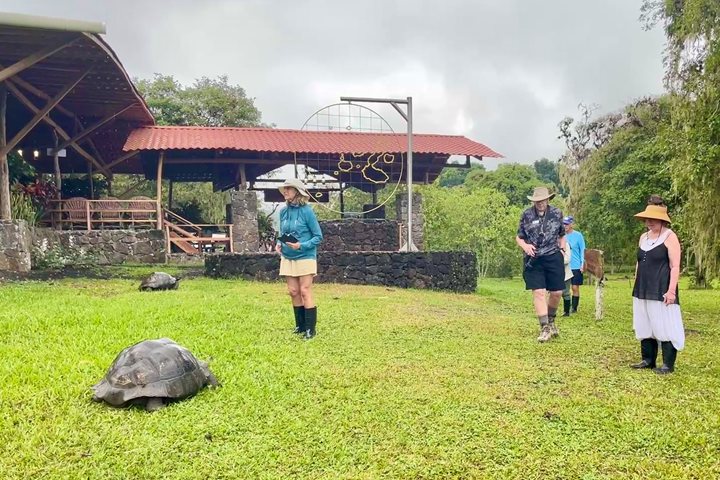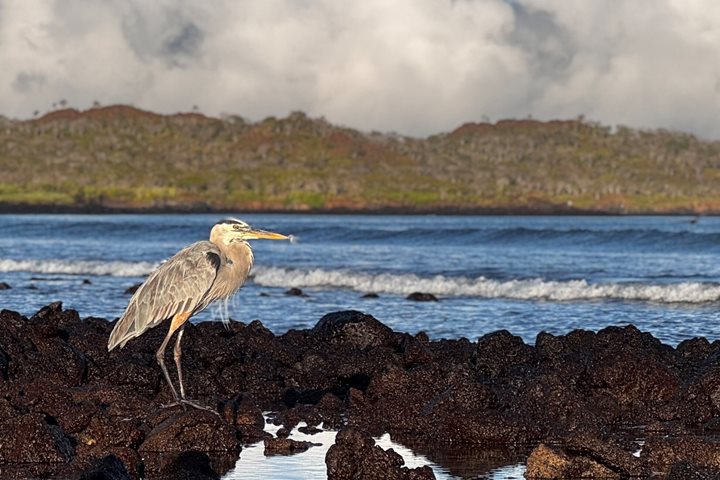Isabela, the biggest island of Galapagos, it is one of the most beautiful places on earth. Today we are going to visit Urbina Bay in the morning and Tagus cove in the afternoon, two legendary spots. Urbina Bay is a breathtaking spot because it is one of the newest uplifted areas of the world. Five kilometers of the west coast came above the ocean in 1954. Tagus Cove is one of the places visited by Darwin in 1835 and it was a very favorite refugee for pirates and buccaneers about 300 hundred years.
Our morning starts with a power hike at Urbina bay. We disembarked on a black beach where some pelican, noddies and penguins were catching their breakfast food; this morning we found a lot of turtle tracks that probably came over the sand dunes the night before to lay their eggs, or at least to try.
Inland, the humidity was high, and many of the endemic plants found on this place have started to bloom. The rainy season is coming and the Darwin finches are making their nests, so we had the opportunity to see many of them in the midst of their efforts. As soon as we begin our walk, we came across a Galapagos land iguana that was waiting for us. Land iguanas build borrows to keep warm at night, and we saw many of these tiny tunnels in the ground throughout our walk. A few minutes later, a giant tortoise came out of the dense vegetation along the trail; tortoises usually live on the top of the volcanoes, like Aledo volcano, which we were at the foot of. Tortoises migrate from the top of these shield geological structures all the way to the shoreline in search of food or places to nest. Alcedo volcano has the biggest population of these reptiles in the entire archipelago; so they were the main surprises of the morning.
This place has a very unique connotation, because every rock that you see here, every piece of coral that you find reminds us of the fact that this place was under water only 60 years ago, and was shelter for many fish, sharks and sting rays that rested on the sea bed that now is a walking land. It is very impressive to see giant white coral on land, and along the coast we find vestiges of sea worms, barnacles that survived on these rocks. The walk along the coast gave us more surprises like flightless cormorants, penguins, marine iguanas and some sea lions playing in the intertidal zone.
As soon as we returned to the little beach where we disembarked before, some our guests jumped into the water to swim and cool off, right at the same moment as some penguins and a pelican began fishing in the water, and they got the opportunity to swim with them. After a wonderful morning, we came back to our ship.
In the afternoon we moved to Tagus Cove, where Darwin landed and probably conducted some of his first studies of the geology and ecology of the islands; there is a beautiful lagoon at this spot that is named after him. Some explorers went to kayak along the great cliff made of tuff material that decorates this bay; the variety of animals you can see here is amazing and the landscape is spectacular. Snorkeling was another of our activities options, and our guests had the opportunity to swim with penguins and turtles, which is one of the best experiences that one can have in Galapagos. They were very happy to have this encounter with nature.
Later in the day, some of us went on a power hike to see the lagoon. We encountered several of the land bird species that live here, like mocking birds and Galapagos hawks, and we came across some very old graffiti that was carved on the wall about 200 years ago when pirates and buccaneers visited the islands.
On the way back to the ship, we took a Zodiac ride along the bay, where we found sea birds and marine turtles mating on the surface of the ocean, and as the sun came down and drew us a very amazing scenery, a couple of sea lions jumped at the bow of our Zodiac playing dolphin. It was a perfect ending for a great day.







